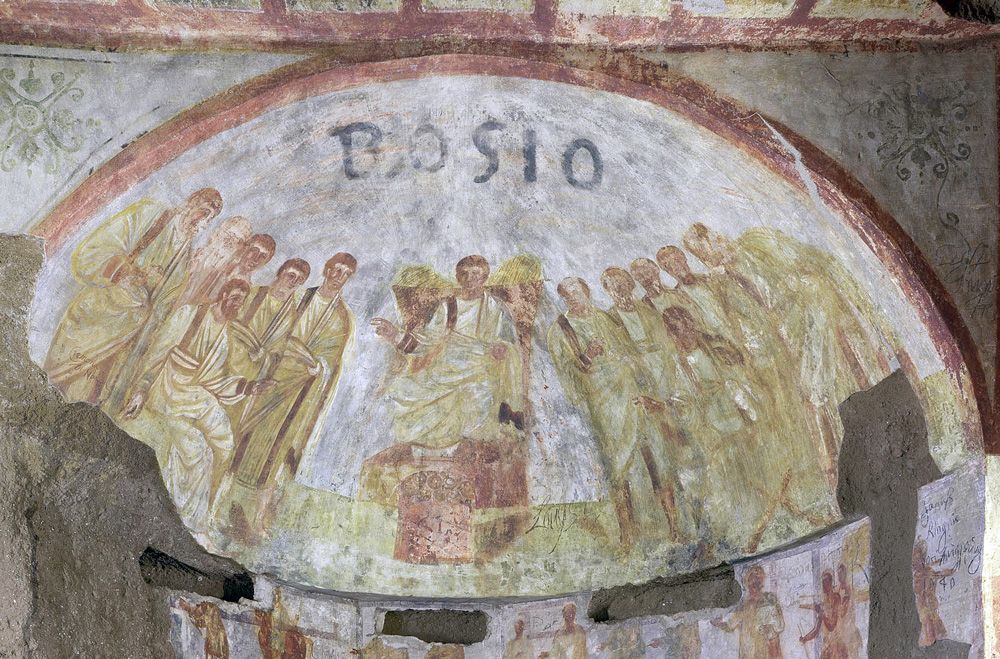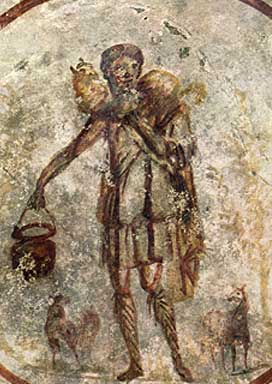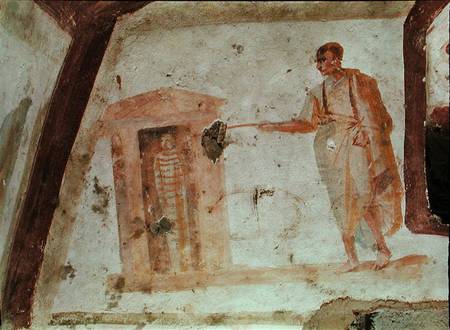After the time the Edessa image was rediscovered in 525, art depictions of Jesus standardized to the image on the TS. Before this, Jesus was depicted in various ways, commonly without a beard and Roman-like.

https://commons.wikimedia.org/wiki/File … acidia.jpg
The Good Shepherd mosaic in the Mausoleum of Galla Placidia in Ravenna, Italy dates to the early to mid 5th century.
The Good Shepherd mosaic in the Mausoleum of Galla Placidia is not only one of the oldest depictions of Jesus, but one of the most beautiful and well-preserved. The Mausoleum is a UNESCO World Heritage Site and features other mosaic works of art. The Good Shepherd is found over the north entrance and shows Jesus in a more regal form than other early good shepherd paintings.
https://www.oldest.org/artliterature/jesus-paintings/
The Mausoleum of Galla Placidia is a Late Antique Roman building in Ravenna, Italy, built between 425 and 450.The figure of the Good Shepherd and pastoral scenes were familiar to Christian thought; depictions of a young man, the criophorus, bearing on his shoulders a sheep were known in the ancient world from the 6th century BC and was adopted from the late 3rd century AD into Christian art, especially in funerary contexts.
https://en.wikipedia.org/wiki/Mausoleum … a_Placidia

The frescoes found in the catacombs of St. Domitilla in Rome, Italy dates to early 5th century.
The ancient catacombs of St. Domitilla sprawl for more than 10 miles (17 kilometers) in a labyrinth of tunnels beneath Rome and contain numerous tombs, many belonging to the city’s elite.Now, using a technique called laser cleaning, in which lasers are used to remove centuries of grime, researchers have uncovered elaborate frescoes in two sections of the catacombs: the burial chamber used by a grain purchaser (sometimes referred to in scholarly literature as a baker) and the “introductio,” which shows a “a personal presentation of the dead to Christ,” said Barbara Mazzei, an archaeologist with the Pontifical Commission for Sacred Archaeology, the organization that unveiled the newly visible frescoes at the end of May.
A bucolic scene with a shepherd and another with Christ on a throne between two groups of apostles were also revealed in the catacombs.
https://www.livescience.com/59424-paint … combs.html

https://commons.wikimedia.org/wiki/File … _close.jpg
Painting of the Good Shepherd in the Catacombs of St. Callixtus in Rome, Italy dates to mid 3rd century.
“The Good Shepherd” is believed to be one of the oldest existing paintings of Jesus. The painting shows a young beardless Jesus collecting sheep, which was one of the most common images of Jesus at the time. This particular painting is one of the best preserved and was found in the Catacombs of San Callisto.
https://www.oldest.org/artliterature/jesus-paintings/

Christ Raising Lazarus: Catacomb of the Giordani in Rome, 3rd century
When Christ wasn’t disguised as a Shepherd or as a Greek god, followers often showed him in the act of his biblical miracles. Far from being as inflammatory as the resurrection, showing Jesus’ miracles was a relatively safe way to praise Christ’s divinity, if this clandestine art were ever to be discovered. That being said, the majority of these types of works are found only in the Post-Constantine era.
https://blogs.cuit.columbia.edu/maf2219 … tianity-2/
https://debatingchristianity.com/forum/viewtopic.php?p=1122916#p1122916
